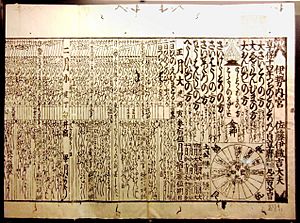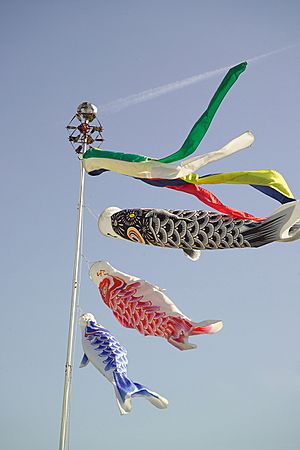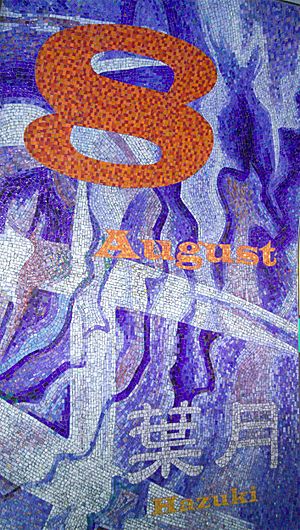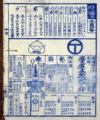Japanese calendar facts for kids
The Japanese calendar has used different official and unofficial systems over time. Today, Japan uses the Gregorian calendar, which is the one most of the world uses. They also use a special system called the Japanese era name system. This system names years based on the reign of the current emperor.
Contents
History of the Japanese Calendar
The first calendar system came to Japan from Korea around the middle of the 500s. This was a lunisolar calendar, similar to the Chinese calendar. It used both the sun and the moon to keep track of dates.
For a long time, Japan used different ways to calculate its calendar based on Chinese methods. From 1685, they even developed their own Japanese versions of these methods.
However, in 1873, Japan made a big change. This was part of a time called the Meiji period, when Japan was modernizing quickly. They decided to switch to the solar Gregorian calendar. This calendar only uses the sun's movement to track dates.
Because of this change, the old Chinese calendar is not really used in Japan anymore. Celebrations like the Lunar New Year are mostly observed by Chinese and other Asian communities living in Japan.
Yearly Holidays in Japan
The Japanese calendar has many yearly holidays and traditional events. Some of these holidays help to keep old customs alive.
The names and dates of some of Japan's national holidays have changed over the years. Here are some of the main ones:
| Date | English Name | Official Name | How to Say It |
|---|---|---|---|
| January 1 | New Year's Day | 元日 | Ganjitsu |
| 2nd Monday of January | Coming of Age Day | 成人の日 | Seijin no hi |
| February 11 | National Foundation Day | 建国記念の日 | Kenkoku kinen no hi |
| March 3 | Girls' Day | 雛祭の日 | Hinamatsuri |
| March 20 or March 21 | Vernal Equinox Day | 春分の日 | Shunbun no hi |
| April 29 | Shōwa Day | 昭和の日 | Shōwa no hi |
| May 3 | Constitution Memorial Day | 憲法記念日 | Kenpō kinenbi |
| May 4 | Greenery Day | みどり(緑)の日 | Midori no hi |
| May 5 | Children's Day | 子供の日 | Kodomo no hi |
| 3rd Monday of July | Marine Day | 海の日 | Umi no hi |
| 3rd Monday of September | Respect for the Aged Day | 敬老の日 | Keirō no hi |
| September 23 or September 24 | Autumnal Equinox Day | 秋分の日 | Shūbun no hi |
| 2nd Monday of October | Health-Sports Day | 体育の日 | Taiiku no hi |
| November 3 | Culture Day | 文化の日 | Bunka no hi |
| November 23 | Labour Thanksgiving Day | 勤労感謝の日 | Kinrō kansha no hi |
| December 23 | The Emperor's Birthday | 天皇誕生日 | Tennō tanjōbi |
Related pages
Images for kids
-
A Japanese Calendar made from a woodcut in 1867.
See also
 In Spanish: Calendario japonés para niños
In Spanish: Calendario japonés para niños







